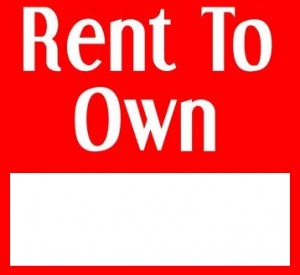Tips for Home Sellers to Minimize Their Risk in Lease-to-Own Transactions
The economic downturn in the housing market over the past 5 years has driven up the number of sellers willing to consider leasing out their homes with an option to sell. This can be a wise move in the right situation but sellers need to make sure they take steps to minimize their risk in these transactions.
For the duration of the lease the seller of the home cannot market the home to would-be buyers. This time period could be as short as one year or as long as three years depending on the renter’s financial condition. Sellers should demand an option fee up front. This fee can be applied to the purchase if the renter indeed manages to arrange financing at the end of the lease. However, if the renter decides to pursue another home, they forfeit the fee. This fee is usually in the range of 3% to 5% of the agreed purchase price in order to ensure the buyer is committed to the purchase.
Protect Against Appreciation
Once again, going back to the fact that the seller is not able to market the home while it is under a lease contract, it is possible the home could appreciate greatly in value. It is wise for most sellers to add at least 5% to the current market price of the home when writing out the lease-to-own contract to help the seller reduce their possible loss. At the same time, the buyer is getting a price on the home, in writing, for a future date. This is a big plus for the buyer since they now know the price cannot rise.
Work Out a Contract for Maintenance and Repairs
In order to give the buyers the sense of actually owning the home, sellers can ask buyers to sign a contract that spells out responsibilities for maintenance and repairs. Obviously, most renters will not be inclined to pay for major repairs such as a roof replacement or installing a new heating and air conditioning system. But the seller may want to enforce a policy that lawn maintenance, modest repairs for plumbing and electrical needs, and other such items are the responsibility of the buyer. This can help the buyer budget for future repairs and also help them decide if they are financially ready to purchase a home.
Carrying Additional Insurance
While the buyer/renter is in the home as a tenant sellers will require proof of renters insurance. However, it is a good idea to carry an additional policy on their home beyond their current needs. Catastrophic events such as tornadoes, fires and floods happen when we least expect them. Nothing makes a tragedy worse than realizing there was not sufficient insurance coverage to handle the damage.
Many hopeful borrowers are in need of something beyond a traditional mortgage. The lease-to-own model is a good way for sellers and buyers to reach their intended goals. However, sellers need to be especially careful in these deals to make sure their interests are protected beyond merely the sale of the home.
Original Post - Rent-to-Own Minimizing Risks
